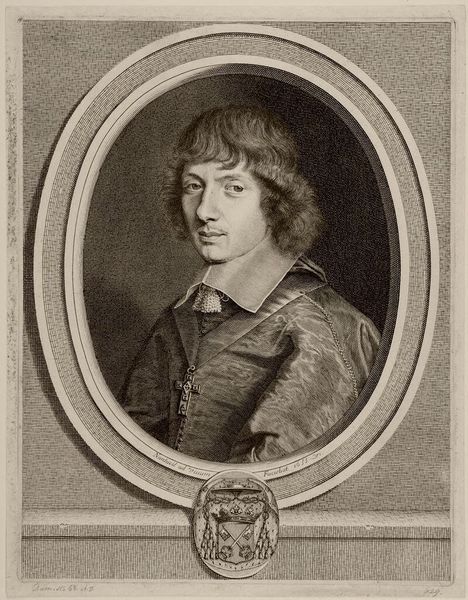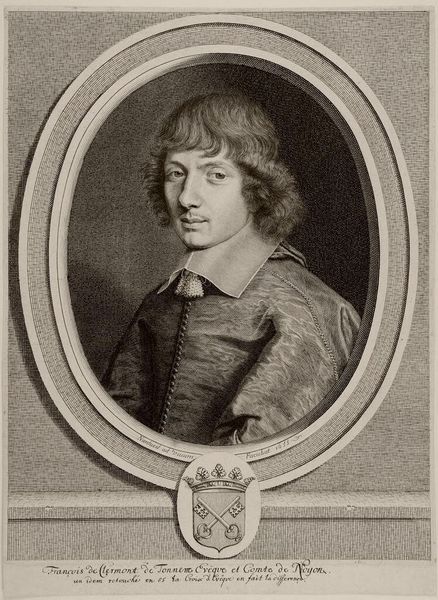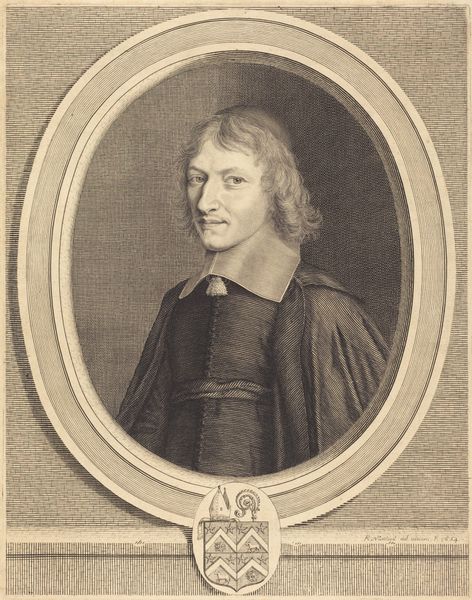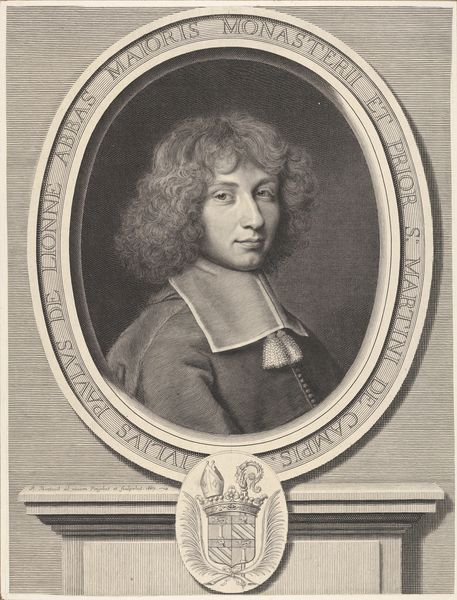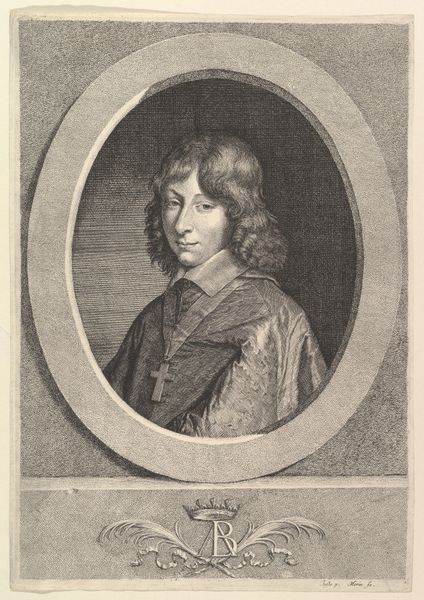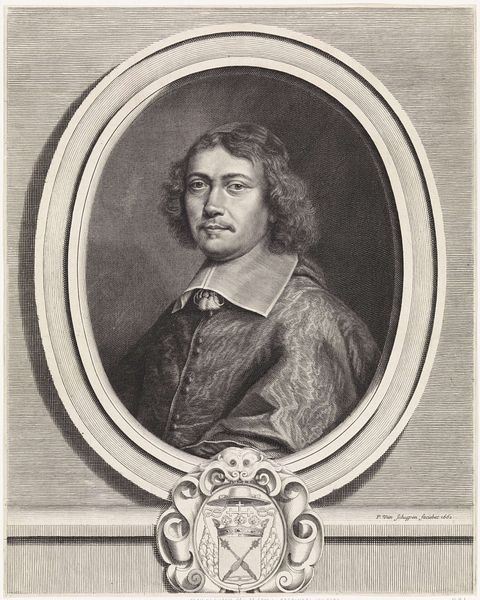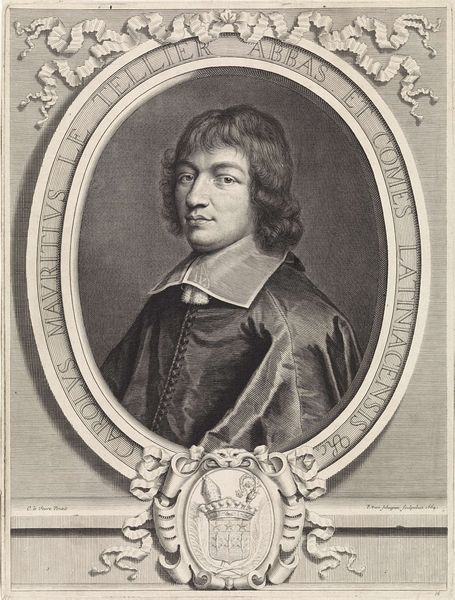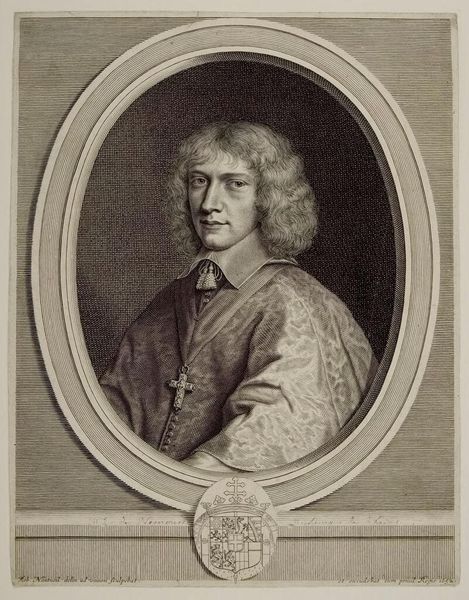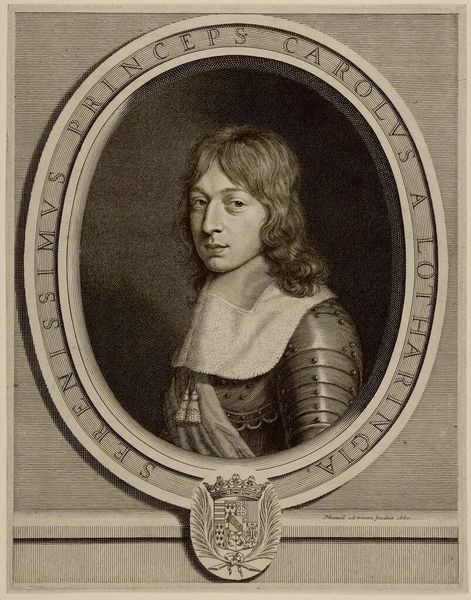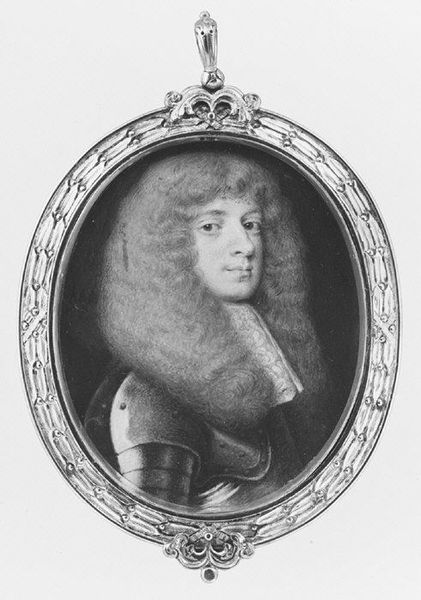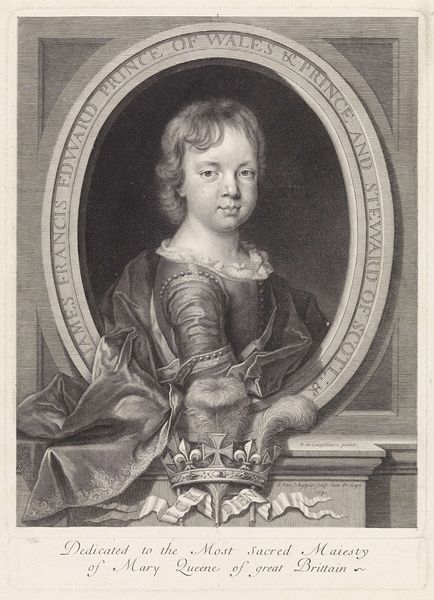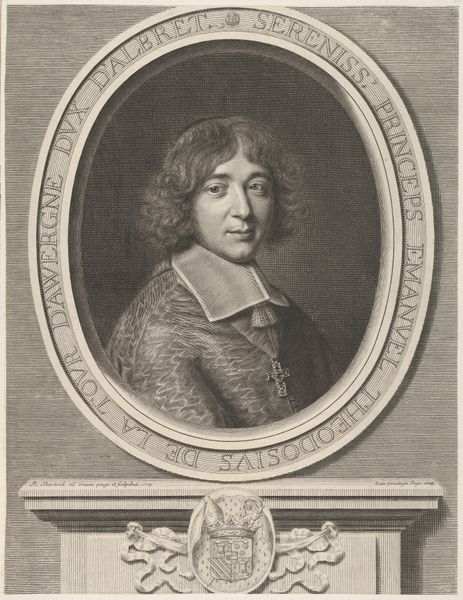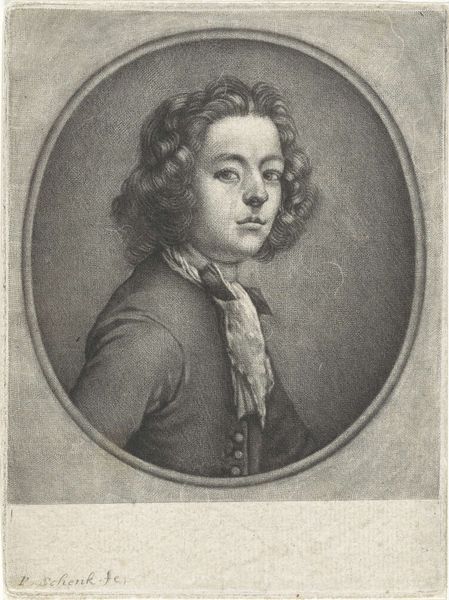
engraving
#
baroque
#
line
#
academic-art
#
engraving
Dimensions: height 320 mm, width 246 mm
Copyright: Rijks Museum: Open Domain
Curator: Here we have Robert Nanteuil's "Portret van François de Clermont-Tonnerre," an engraving dating back to 1655. Editor: There's something almost melancholic about his expression. He seems caught in a moment of reflection, perhaps even vulnerability. The soft curves and detailed lines also give a certain luxurious feeling despite the limited grey scale. Curator: Absolutely. Nanteuil was a master of line engraving, a technique that was highly valued in the academic art circles of the Baroque era. This work speaks to the political importance of portraiture at the time. Clermont-Tonnerre was likely a prominent figure; portrait engravings circulated and reinforced status. Editor: I wonder, though, about the power dynamics at play. Here's a man being immortalized, likely benefiting from systems of privilege. Is the artist complicit in maintaining that status? Where do we draw the lines, and is the aesthetic appreciation different based on who we focus on? Curator: That's a valid and important point. But within the context of the time, artists were often commissioned by the elite. By the nature of his patrons, Nanteuil existed inside a specific socio-political structure. That being said, the level of detail is remarkable, wouldn’t you agree? How the engraving captures light and shadow using nothing but incredibly fine lines! Editor: Agreed. And there's beauty in that technical mastery, even while considering the historical context. The way light falls across his face...you see hints of humanity and feeling amidst a period defined by hierarchy and the projection of power. The soft texture in the coat seems luxurious, but almost to a distracting degree. Curator: Seeing this now makes me think how images play so many social roles in every age, including this one. Editor: It reminds us of art's inherent contradictions—how it can be both a mirror reflecting societal structures and a lens offering glimpses into individual lives. Art like this invites us to critically examine how historical works resonate, challenge, and inform contemporary discussions around class, privilege, and identity.
Comments
No comments
Be the first to comment and join the conversation on the ultimate creative platform.
